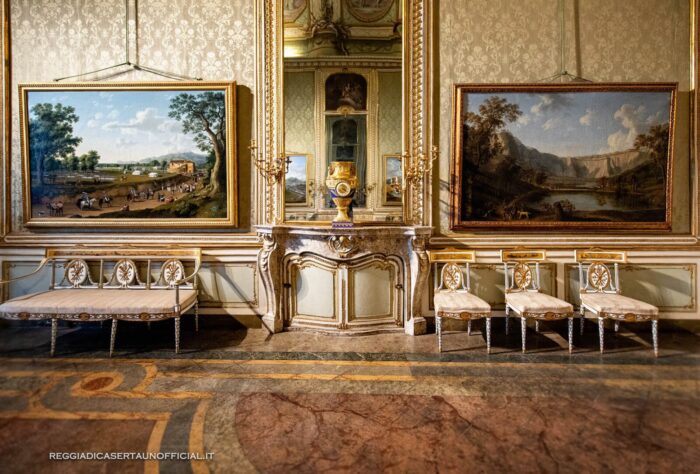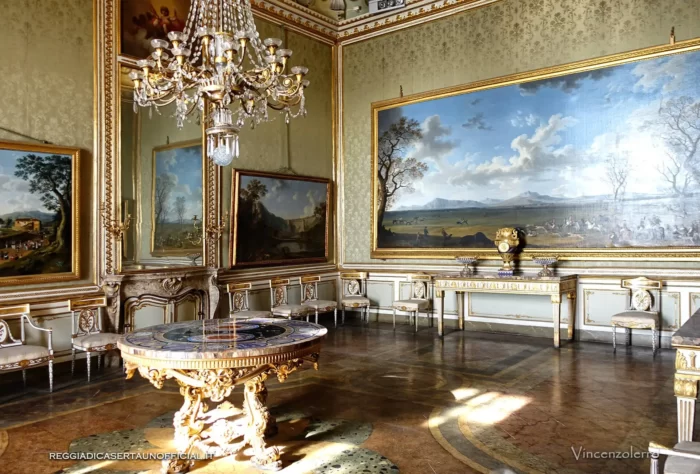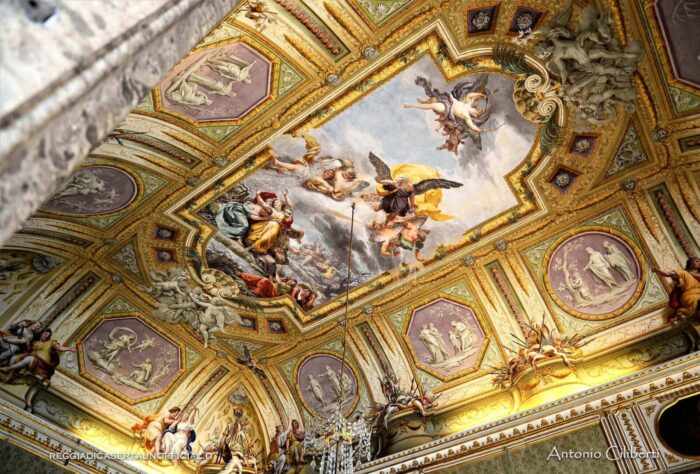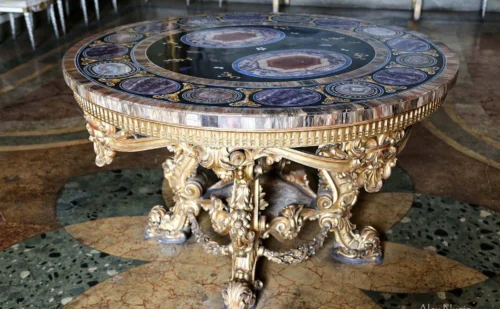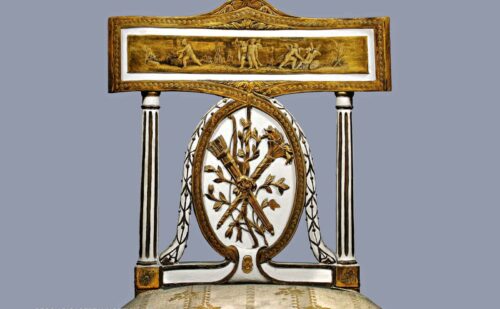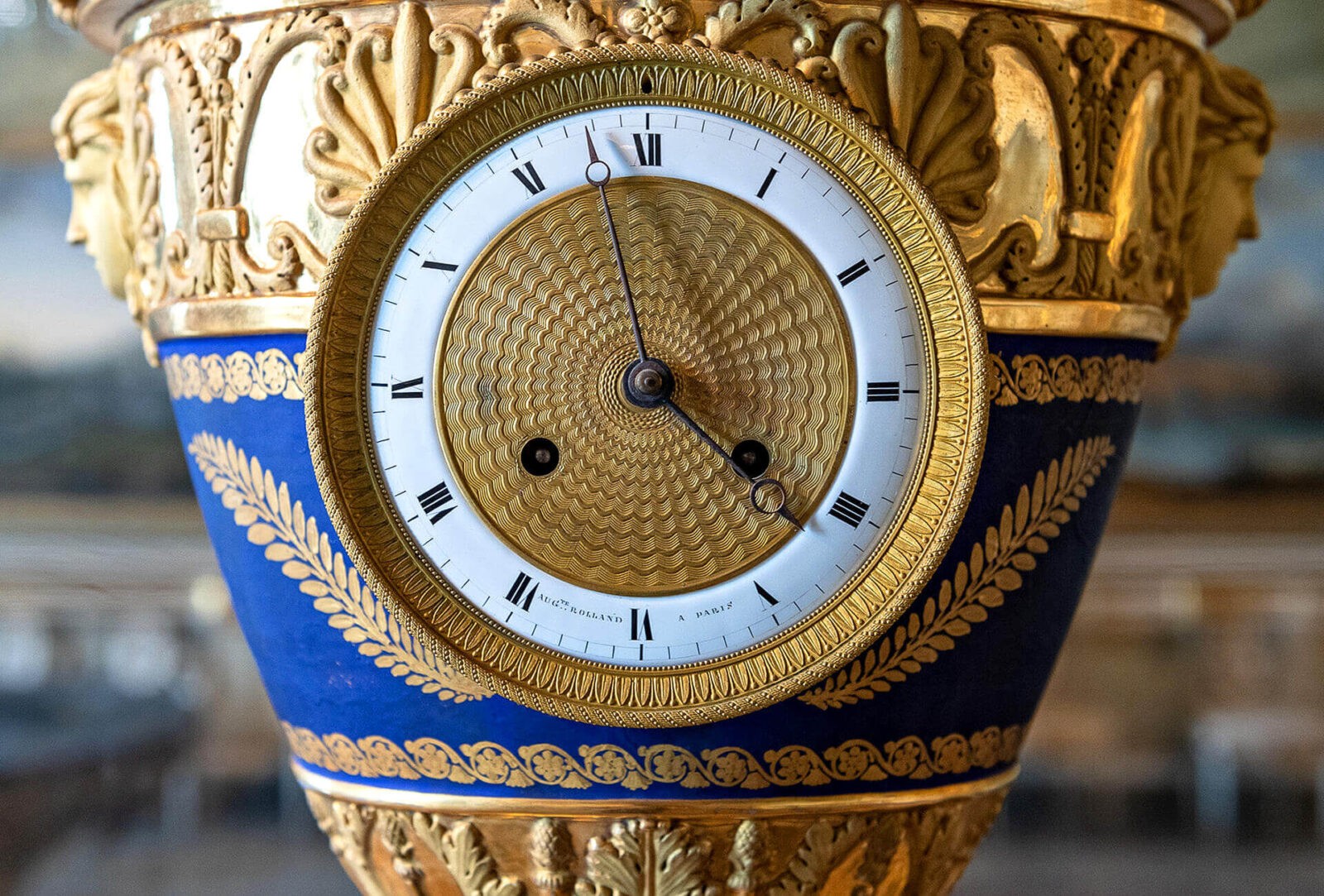The Winter Room, the former King's dressing room
The so-called Winter Room of the Royal Palace of Caserta was the King's dressing room.
Decorations and furnishings of the dressing room
The fresco
The fresco representing Winter was created by Fedele Fischetti in collaboration with Filippo Pascale:
- Fedele Fischetti – “Boreas kidnapping Orizia”. According to Greek myth, Boreas was the god of the North Wind and Orizia a cloud god abducted by Boreas.
- Filippo Pascale – Decorations with monochrome cameos on a purple background of Pompeian inspiration, with masks, trophies of arms and allegorical figures still of Baroque origin.
paintings
In the King’s Dressing Room the overdoors and overmirrors are the work of Gerolamo Starace. The five paintings are the work of Jacob Philipp Hackert depicting hunting and military scenes.
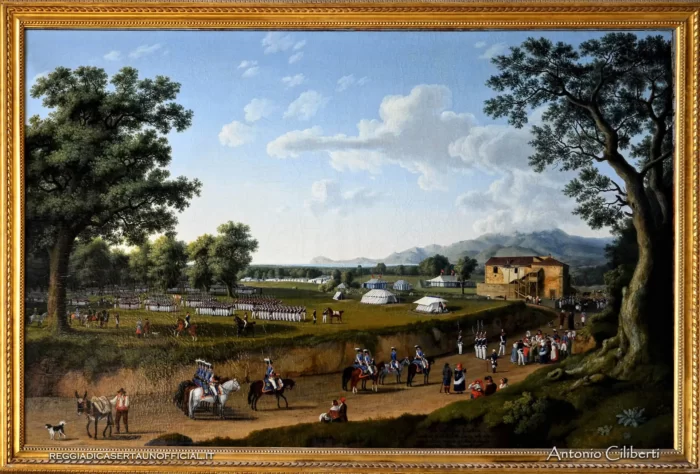
Hackert – “Military exercises in Santa Maria della Piana, near Sessa Aurunca”
Furnishings
Auth. Maria Carmen Masi
The fixed furnishings in white and gold and the gilded corner units are original. But it seems possible to move them between rooms and to replace the wallpaper in tandem with the changes of fabric on the walls.
The overdoors and over-mirrors are by Girolamo Starace, the carvings in wood, lead and tin by Gennaro Fiore, finally the gilding was done by Bartolomeo di Natale. As early as 1799, the room displayed 5 paintings by Hackert on the walls depicting hunts and military manoeuvres. The retractable door, on the other hand, had to give onto a Retrette by S.M. Il Re, where two mahogany organs for music seem to have been placed.
Neapolitan table from the mid-19th century, in neo-baroque style with top in semi-precious stones (amethysts, agates, etc.)
External Link
